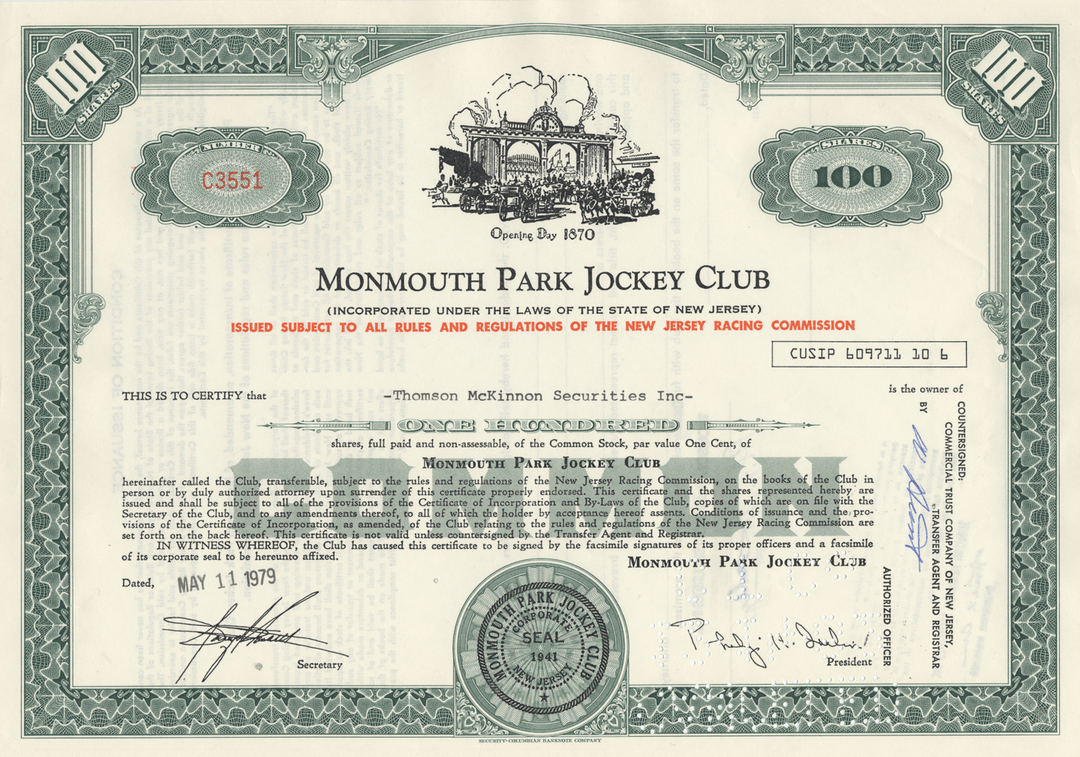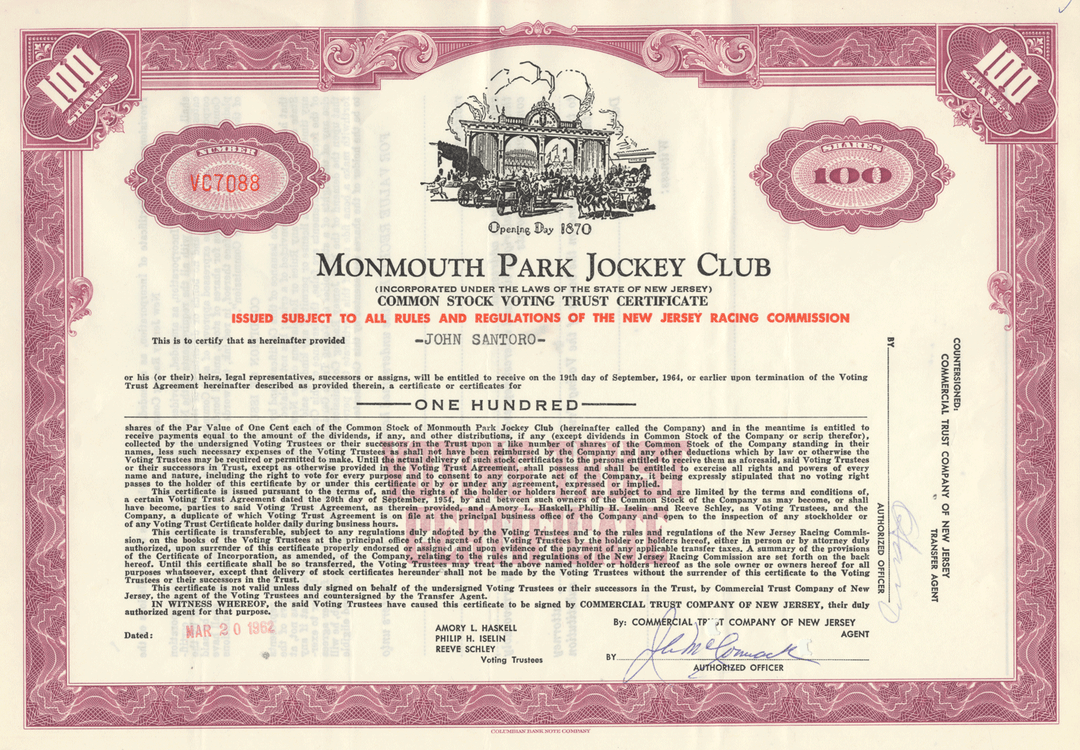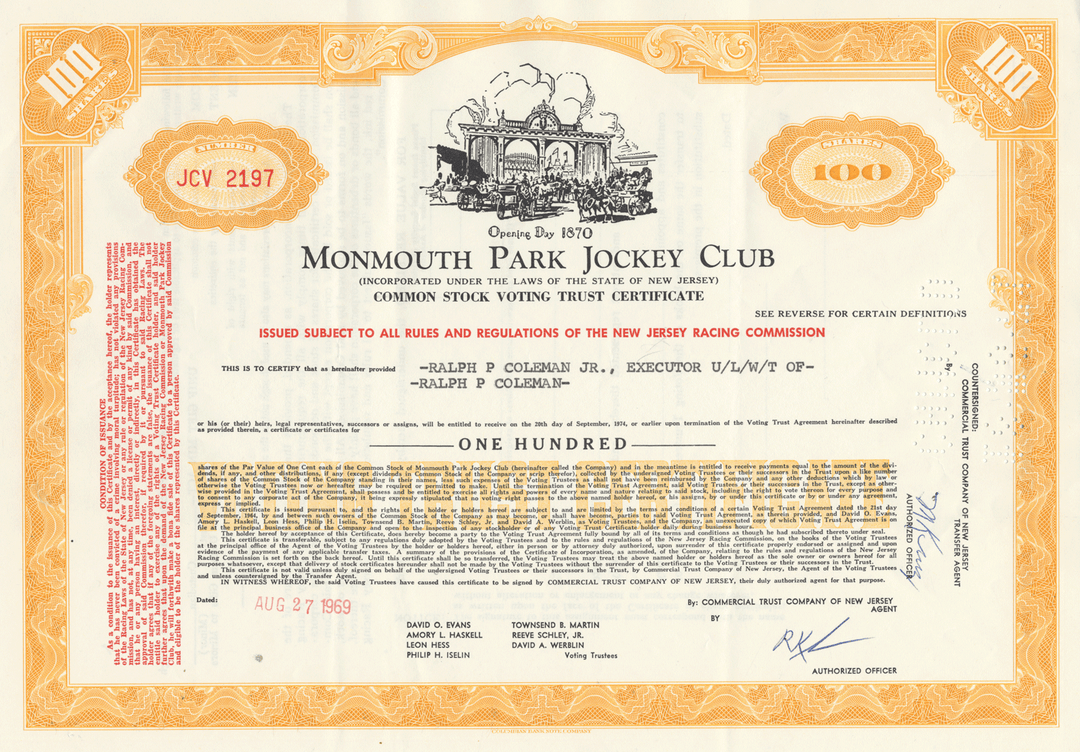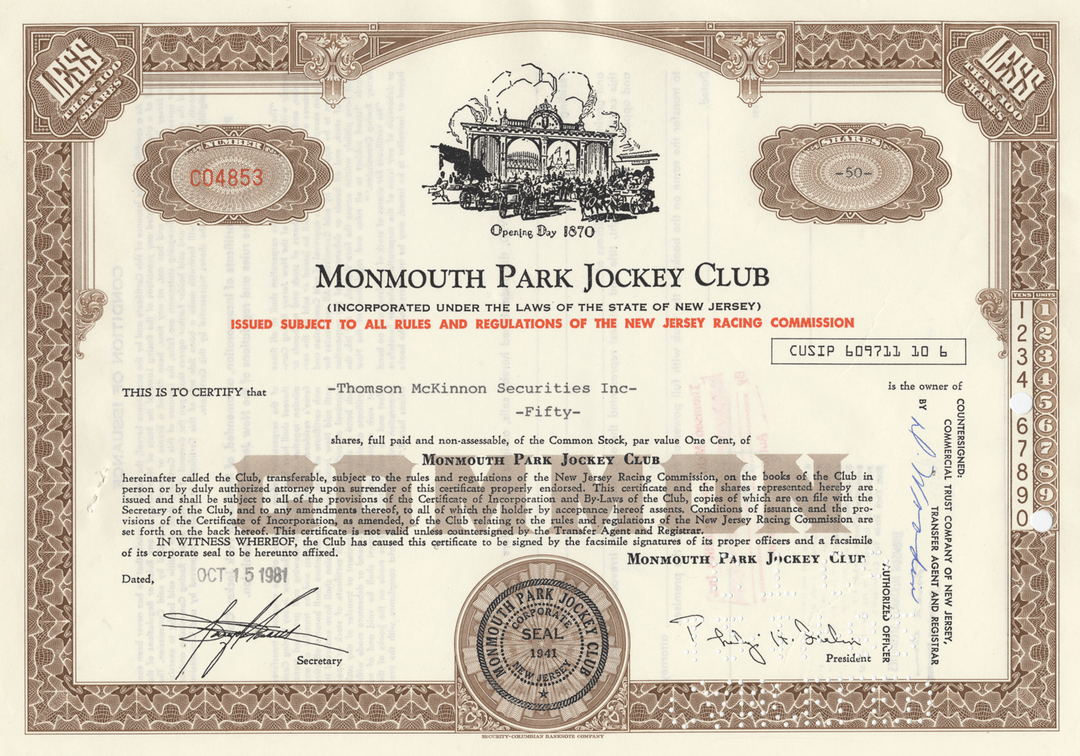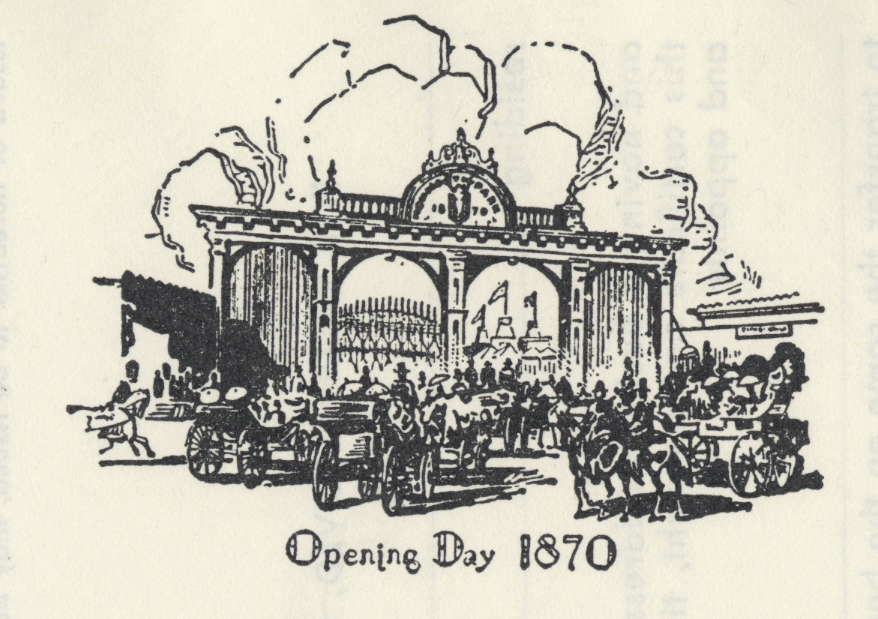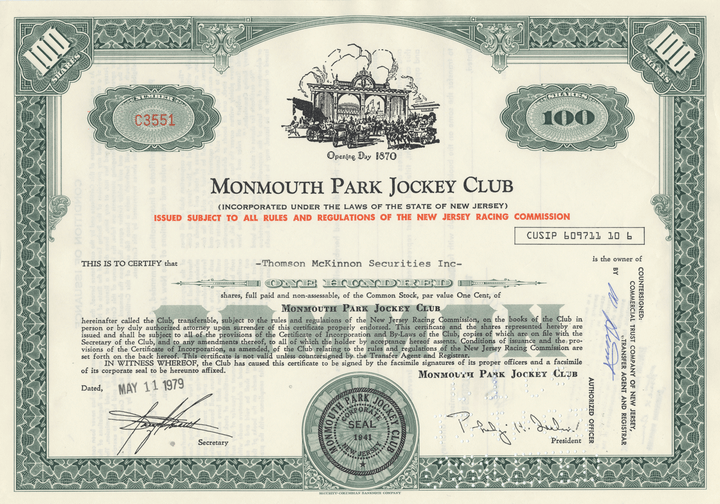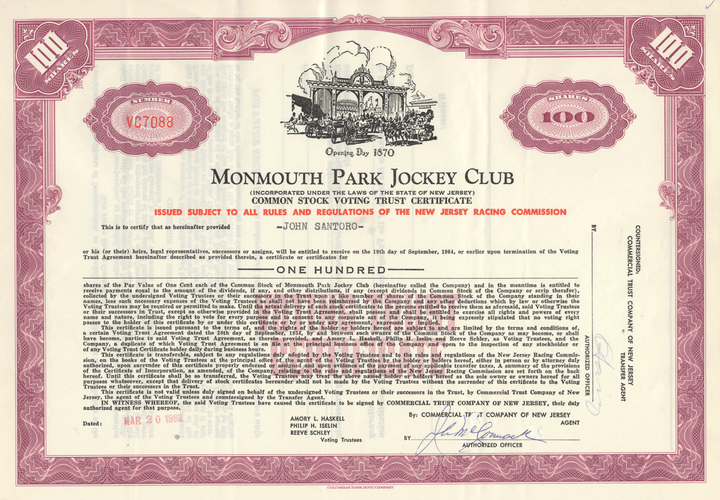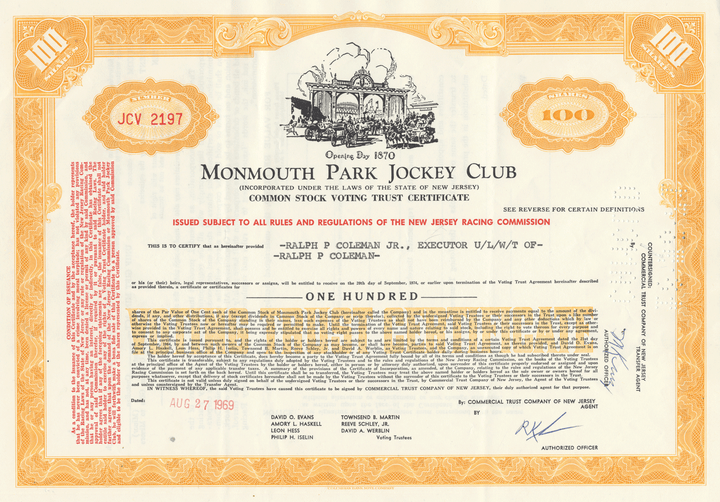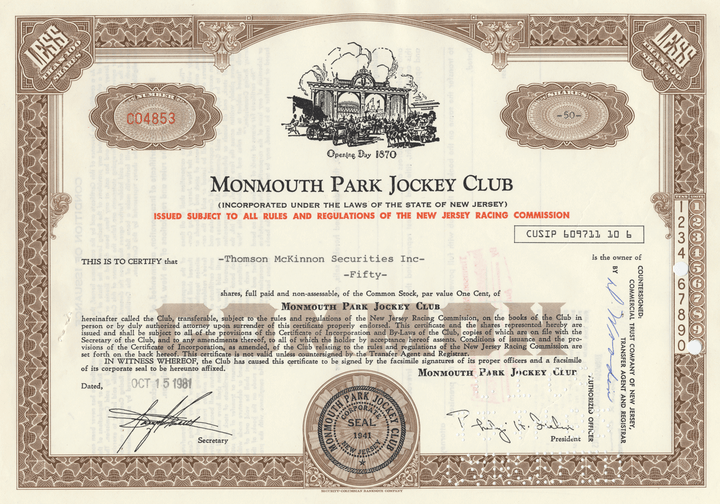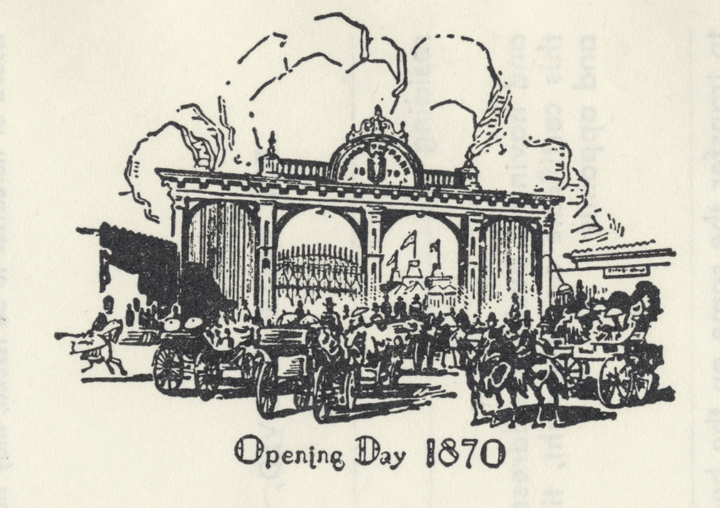Monmouth Park Jockey Club
- Guaranteed authentic document
- Orders over $75 ship FREE to U. S. addresses
Product Details
| Company | Monmouth Park Jockey Club |
| Certificate Type | Common Stock/Common Stock Voting Trust |
| Date Issued | 1960's, 1970's and 1980's |
| Canceled | Yes |
| Printer | Security-Columbian or Columbian Bank Note Company |
| Signatures | Machine printed |
| Approximate Size |
11 3/4" (w) by 8" (h) |
|
Product Images |
Represnetative of the piece you will receive |
| Authentic | Yes |
| Additional Details | NA |
Historical Context
Monmouth Park has been a New Jersey shore tradition since 1870. Three buildings have carried the name Monmouth Park in the last 139 years.
Monmouth Park’s long and storied history dates back to July 30, 1870 when the track opened, just three miles from Long Branch.
The track was a result of the innovative ideas of New York businessman John F. Chamberlain, New Jersey Senate President Amos Robbins and Adams Express Company President John Hoey in an effort to increase summer trade for once bustling shore communities. Their ploy worked, and Monmouth Park opened its inaugural five-day meet amid much national fanfare.
Due to the high caliber of its racing, Monmouth Park achieved distinction as the “Newmarket of America”– a reference to the famed racecourse in England. Three years after the first Monmouth Park was opened, financial difficulties forced the track to close.
Horse racing returned to Monmouth Park under a syndicate of George L. Lorillard, D.D. Withers, G.P. Wetmore and James Gordon Bennett. They spent four years restoring the grounds and rebuilding the grandstand and in 1882, the rebuilt Monmouth Park opened its gates. Due to its overwhelming popularity, a new racecourse was built adjacent to the existing track, and in 1890 the second Monmouth Park opened. Monmouth Park’s gates were not open for long.
In 1891, the Monmouth Park meet was moved to Jerome Park and Morris Park while state legislation tried to suppress pari-mutuel wagering. The state was ultimately successful, and on March 21, 1894, banned wagering on horses. The track was closed and the land sold. Racing would not return for over 50 years.
During the 1940’s, Amory L. Haskell played a major part in lobbying to legalize pari-mutuel wagering for both the Standardbred and Thoroughbred industries.
On June 19, 1946, for the third time and after a 53-year hiatus, Monmouth Park reopened its doors. Under the new leadership of Haskell, Philip H. Iselin, Reeve Schley, Joseph M. Roebling, Townsend B. Martin, John MacDonald and James Cox Brady, the Monmouth Park Jockey Club was born.
Iselin became chairman of the construction committee and was named treasurer of the Monmouth Park Jockey Club. In later years, after the death of Haskell, he would take over as president of the track.
Opening day attracted 18,724 in attendance, and Monmouth Park returned to a level of glory and prestige that had only been a memory. The first horse on the grounds was Ship Ahoy, who arrived from Mexico for owner Mrs. L. V. Bellew of Chicago.
Jockey Nick Jemas won two that day including the opener aboard Blind Path. Modern day stakes races, including the Molly Pitcher Handicap and the Lamplighter, held their inaugural running in 1946, with the Monmouth Oaks and Colleen Stakes continuing their popularity from the 1800’s.
The New Jersey Sports and Exposition Authority purchased Monmouth Park in 1986 and many of the historic, century-old stakes races were reinstated, with the Monmouth Cup, inaugurated in 1884, renamed the Philip H. Iselin Handicap.
Related Collections
Additional Information
Certificates carry no value on any of today's financial indexes and no transfer of ownership is implied. All items offered are collectible in nature only. So, you can frame them, but you can't cash them in!
All of our pieces are original - we do not sell reproductions. If you ever find out that one of our pieces is not authentic, you may return it for a full refund of the purchase price and any associated shipping charges.





